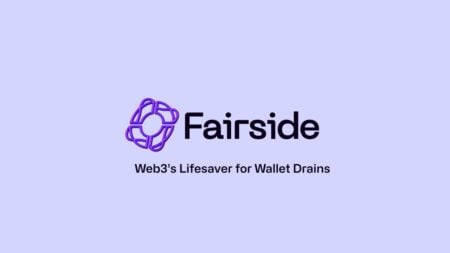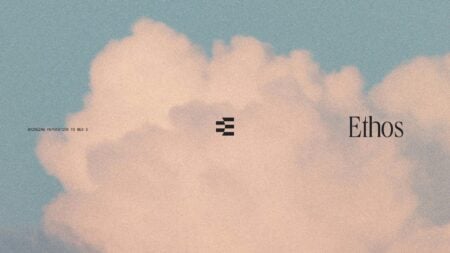Let’s skip the tech talk and go straight to how NFTs work in practice and impact our daily lives by enabling ownership of digital assets
NFT avatars and art from my own and others’ collections
Still trying to make sense of these NFTs you keep hearing about? Don’t worry, you’re not alone. I’m often asked about NFTs, what they are, how they work, and why they matter. You’ll find plenty of explanations of how the blockchain, smart contracts, and all that stuff works. You won’t get that from me though.
First of all because I’m not techy enough to explain it. Second of all, and most importantly, we won’t talk tech because it doesn’t matter. Sure, if you want to be a blockchain developer or create your own smart contracts, you need to understand all of it. For most of us though, it’s simply not important.
Instead, let’s talk about how NFTs impact our lives as regular consumers, the different kinds of NFTs that are out there, and how they work in practice.
First up, let’s set the stage by talking about the world before NFTs.
The world before NFTs
In the digital world, we’re used to files being easily copied and shared indefinitely. You can simply duplicate your text document, PDF, image, or video, and send it to as many people as you’d like.
Furthermore, there’s really no distinction between your file and mine after you’ve done this. The original and the copy are essentially the same. This prevents certain traits we’re used to in the physical world from existing in the digital.
There’s no concept of scarcity in the digital world, for instance, because any digital file is infinitely duplicated and distributed.
The easy reproduction and indistinguishability of digital assets ruin the concept of uniqueness as well, another trait we’re used to from physical items.
The above prevents ownership of digital files. If you can’t prove that your copy is the “real one”, you can’t truly own it.
What this essentially boils down to is a world where very little value can be assigned to a digital asset. This has largely prevented an open market for digital art, music, illustrations, photos, game artifacts, and many other digital assets. With that, it has made it very difficult to make a living as a digital creator.
At least until NFTs entered the stage and changed everything.
NFTs enable ownership of digital assets
An NFT is essentially a unique token, like a certificate of authenticity, that we can attach to a digital file. When we do, that specific file becomes identifiable, trackable, and easily distinguishable from copies of it, unlike our pre-NFT world of duplication and sharing.
This makes digital files truly ownable, just like any physical item in your possession. If you buy an NFT, let’s say a digital piece of art or a highlight from the NBA, no one else can own that specific file. It’s rightfully yours and you have the NFT to prove it.
The uniqueness of each NFT is also what makes it non-fungible. Currencies like the dollar or bitcoin are fungible. Your 1 bitcoin is essentially the same as my 1 bitcoin and we won’t experience a difference if we exchange them with each other. Each NFT, on the other hand, is unique and therefore non-fungible, just like a house or a painting that isn’t readily interchangeable with another house or painting.
Among many other things, NFTs enable artists, illustrators, photographers, musicians, and other creators to produce and sell their digital work in limited quantities.
An artist can sell a 1-of-1 piece of digital art, for instance, just like a traditional painter would sell a canvas painting. An illustrator can sell 1,000 copies of an illustration, similar to a limited edition of prints in the physical world.
And you, as the buyer, can now own a unique or limited-edition piece of work in the digital world, whether it be a photograph, an illustration, an animated gif, a song, a video, or an item inside a game.
4 of the women from ‘World of Women’, a collection of 10,000 unique NFTs (source: OpenSea.io)
Scarcity becomes possible. Ownership becomes possible. And with scarcity and ownership, entirely new markets become possible.
We’re already paying lots of money for art, collectibles, designer brands, and cool gadgets in the physical world, both as investments and as status symbols. Why wouldn’t we do the same in the digital world now that it’s become possible? Even if this doesn’t seem interesting to you, there are plenty of other use cases for NFTs.
You can buy in-game items like clothing and weapons as NFTs. People are using unique NFT avatars as their profile pictures on social media. Some are collecting and playing with digital soccer cards on Sorare or basketball highlights on NBA Top Shot. Fans are buying music and cool merchandise directly from their favorite artists.
Really, anything you can think of in art, collectibles, gaming, music, memorabilia, and just culture in general, is currently being turned into NFTs in one way or another. And we’re still just in the beginning stages of exploring the opportunities.
The screenshot non-issue
Perhaps the most common aspect of NFTs that confuses people, especially when we’re talking about visual art, collectibles, and really anything that exists outside of a closed platform like a game or NBA Top Shot, is the “screenshot issue”: What’s preventing you from simply saving or screenshotting it instead of buying it?!
The short answer is: Technically speaking, nothing prevents you or anyone else from doing that.
‘Geo Warhol’, a 1-of-5 piece of art by 8th project (from my own collection)
If you see a piece of digital art for sale on OpenSea, Rarible, or another NFT marketplace, and you love how it looks and want it as your desktop wallpaper, go ahead and grab that screenshot.
However, there are plenty of people who aren’t satisfied with a screenshot. It simply doesn’t fulfill their needs. Because when you acquire a copy of something, aka a fake, you’re getting something very, very different than the original, even if the two look identical. That’s why I paid $800 for the Geo Warhol above, for instance, instead of simply saving the image on my laptop for free.
True fans and supporters want to support the artists and creators by buying and showcasing their work. Art collectors and investors want to own the most unique, exclusive, and culturally relevant artwork from the greatest artists.
Showing off your (expensive) NFT avatar is a popular trend on Twitter
Many people want the status and admiration that come from showing off an expensive and exclusive piece of art or a collectible, whether it’s in the analog or the digital world. This also explains why so many people buy expensive designer brands and wouldn’t dream of buying a knockoff at a tenth of the price.
On the flip side, it also explains why some people do buy $10 Andy Warhol posters and fake Gucci sneakers. They simply love how they look and don’t care that it’s not the real deal, or they’re imposters and want the accolades without paying the price. And yet, there’s more than enough who do want to pay thousands or millions for original art and luxury brands to sustain a viable market for it.
In fact, there’s a strong case to be made for fakes being a positive driver for the market. Both real-world knockoffs and CryptoPunk copies bring more attention to the originals. Seeing something displayed and shared everywhere proves that it’s culturally relevant and extremely desirable by a large number of people, which only makes the original more valuable.
How it works in practice
I will save the detailed step-by-step for another article and for now just give you an idea about how the legitimacy of NFTs is ensured online so you don’t have to worry about someone trying to sell you a fake.
Inside games and on platforms like NBA Top Shot and Sorare, you buy, store, trade, and use your NFTs within their closed ecosystems. This makes everything safe and simple for anyone who’s new to the world of NFTs.
When it comes to art, collectibles, and avatar projects like CryptoPunks, the Bored Ape Yacht Club, or the World of Women shown earlier, you’ll often be buying your NFTs on a marketplace like OpenSea. You may buy directly from the creator or from another collector on the secondary market. The platform’s verification and curation procedures will do a lot to keep you safe.
First of all, you can be sure that what you buy on OpenSea is an actual NFT. People can’t just sell you a random image file.
Second of all, OpenSea verifies legitimate creators and projects on the platform so you can see which ones to trust. If the creator or the collection doesn’t have the blue checkmark icon, stay away from it.
The Bored Ape Yacht Club collection, one of the verified collections on OpenSea.io
While someone technically can sell a forgery (aka a screenshot) on OpenSea, they would never get verified by the platform. In that regard, it’s really no different than other markets in the real world. Forgeries exist in the art market, in designer clothes, in jewelry, in sports cards, technology, and literally any other market with somewhat valuable products.
Being cautious and doing background checks is good practice whether you’re shopping for watches on eBay or NFTs on OpenSea. In addition to OpenSea, I recommend sticking with the trusted marketplaces like SuperRare, Rarible, Nifty Gateway, Foundation, or MakersPlace, and verifying the source and sales history of whatever you’re interested in buying.
Final words
I know that NFTs require a certain mental jump to wrap your head around. For most people, it’s a very different way of thinking about, interacting with, and consuming digital content. However, NFTs don’t require a mental jump for kids and teenagers growing up right now. The next generation will see NFTs and what they enable as the norm and be creating, buying, and trading digital assets of all kinds.
To that point, it’s still extremely early days for NFTs and the use cases are only just being explored. At the same time though, lots of hype and money have already flown into the space, leading to high prices and serious risk of losses for new investors. Be cautious, don’t expect to make money off of your NFT investments, and don’t spend more than you can afford to lose.
Above all else, have fun with it. Both new technology and art should be exciting to explore, and I can’t think of a better opportunity to combine the two than by getting into the world of NFTs.
Check out my other articles here.





6 Comments
Great, thanks for sharing this post. Really Cool.
Having read this I thought it was very informative. I appreciate you taking the time and effort to put this article together. I once again find myself spending way to much time both reading and commenting. But so what, it was still worth it!
Hey! This is kind of off topic but I need some help from an established blog. Is it very difficult to set up your own blog? I’m not very techincal but I can figure things out pretty quick. I’m thinking about setting up my own but I’m not sure where to start. Do you have any tips or suggestions? Many thanks
phiyem b9c45beda1 https://coub.com/stories/2737866-free-downloads-of-sony-ericsson-pc-suite-garval
yitzrus b9c45beda1 https://coub.com/stories/2777515-tuneskit-ios-system-recovery-2-3-0-17-crack-application-full-version-gilhun
galenik b9c45beda1 https://coub.com/stories/2805597-exclusive-take-time-out-for-a-vtactical-chunderv-v-stream-the-debut-album-from-sp